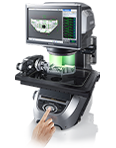What is Tolerance?
A certain amount of error will inevitably occur between the measured value and the true value. What is important is to specify the allowable range of errors. In terms of measurement, the difference between the maximum and minimum dimensions of permissible errors is called the "tolerance." The allowable range of errors prescribed by law, such as with industrial standards, can also be referred to as tolerance.
If "60 (+0.045 -0.000)" is written on a drawing, "60" represents the reference dimension, and "+0.045 -0.000" indicates the tolerance of the upper and lower limits. In this case, the upper limit is 60.045 and the lower limit is 60.000.
One of the reasons for establishing tolerances for practical applications is to find a balance between the processing cost and the intended functions of the object. Increases in accuracy lead to corresponding increases in processing costs. The important point is to ensure that the required functions and quality are achieved, and tolerances must be set accordingly.



